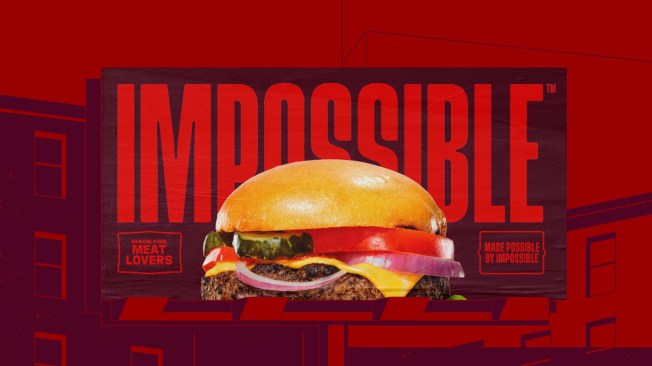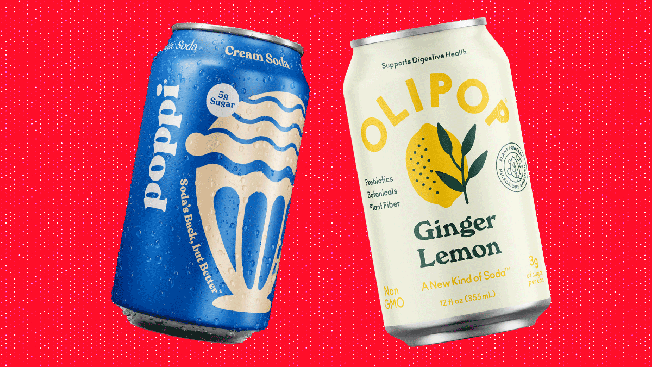6 Sizzling Food Trends Marketers Need to Know
Social media is evolving. Are you adapting? Connect with a community of brand pros and content creators at Social Media Week, May 12–14 in NYC, to learn how to keep pace with new trends and technology. Register now to save 20% on your pass.
There’s no escaping politics these days, even at the natural foods extravaganza called Expo West, where more than 65,000 people gathered at the Anaheim Convention Center near Los Angeles last week.
Expo West, with more than a half-million square feet of real estate and some 3,200 exhibitors, may appear to be a vast sampling extravaganza, which it is, but it’s also a cultural barometer of broader social issues. Held within striking distance of Disneyland, reportedly the “happiest place on earth,” entrepreneurs, manufacturers, retail buyers, marketers, and other attendees had weighty topics to discuss.
Among them: the still-amorphous goals of the new presidential administration’s Make America Healthy Again (MAHA) platform and the on-again, off-again trade tariffs. Bryce Lundberg, co-owner of Lundberg Family Farms, used a newly-coined term—“tariff-ying”—during a mid-week panel, summing up some popular opinion at the annual event.
“It was the first political Expo West,” Jennifer Stojkovic, founder of the influential Vegan Women Summit, said after attending the show. “There’s a large overlap in people in the natural products space that align with the messaging of RFK Jr. [Robert F. Kennedy Jr., Secretary of the U.S. Department of Health and Human Services].”
A smattering of MAHA hats were visible throughout the exhibit halls, though what Robert F. Kennedy, Jr.’s cabinet position will mean for the space is still unknown.
“The natural food movement has been largely ignored for years by presidential administrations on both sides,” Stojkovic said. “This is the first to take it seriously, and now there are people in power who can change regulations and have an impact on what Americans are eating, so it’s not a surprise to see brands openly aligning with that.”
Here are some of the highlights of a trade conference that LAist has called “the Cannes Film Festival of natural nibbles” and “the Super Bowl of conscious consumer packaged goods.”
Long live the cow!
While that statement may seem like anathema at a convention known for its plant-based, animal-free, hippie-crunchy-granola roots, it was an oft-cited trend at this year’s show.
The number of faux meat players and their footprint on the show floor has dropped noticeably, the result of a bursting bubble and cultural headwinds—see also, high prices, elitist marketing, and cripplingly effective “ultra processed” accusations.
The spotlight was on real meat and dairy, with the once-shunned protein sources seemingly regaining their “wholesome” street cred. And a much-discussed substitute for seed oils? Beef tallow.
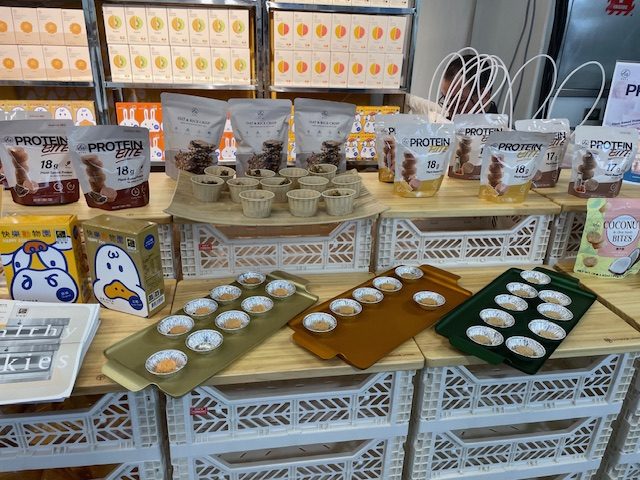
“It feels very different from the Impossible and Beyond heyday,” said Lisa Curtis, founder and CEO of Kuli Kuli Foods, a fast-growing superfood brand. “The cow is back, though often regeneratively grown and with call-outs to animal welfare.”
While not a new topic, regenerative agriculture was on the front burner via prominent on-site sessions and exhibitors’ packaging and positioning.
“Yes, the cow is back, but it’s back in a more mindful way,” said Olga Osminkina-Jones, global president and chief growth officer at Violife. “It’s setting the stage for better-for-you products and compositions that blend plant-based with dairy.”
Food should taste good
Meat substitutes were still on display—via brands like Meati, Actual Veggies, and the mycelium-based MyForest, among others—while Impossible announced its first steak product, zero-cholesterol steak bites.
In keeping with another spiking trend, nearly all the plant-based players were touting the results of their ongoing R&D and product tinkering, intending to bring back buyers who dipped into the category but didn’t return. Lapsed shoppers have said they were suspicious of the long, unintelligible ingredient lists and unhappy with the flavor profiles.
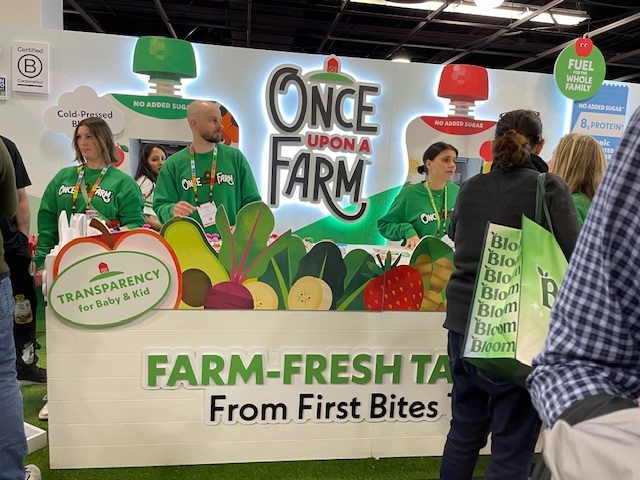
“All the innovation is around cleaner, simpler ingredients—and better taste,” said Dayton Miller, managing partner at investor BFG Partners.
Along with product reformulations, there’s been a marked change in advertising in plant-based products, according to Osminkina-Jones, who noted Violife’s emphasis on “simple indulgence” and taste so buyers don’t feel like they’re compromising.
“The way to connect with consumers has shifted away from a very dogmatic stance to a much more inclusive place of inviting everyone to the table,” she said.
The Ozempic effect
The predictions are head-turning: J.P. Morgan research shows that 30 million people in the U.S. will use GLP-1 drugs by 2030. That translates to about 9% of the population, with sales expected to top $100 billion.
The phenomenon has had a profound impact on food, beverages, and supplements, where it’s sometimes obvious in brand positioning (claims of being “the natural Ozempic”) and often reflected in products designed to support people who take Wegovy, Zepbound, Mounjaro, and others.
Protein and fiber were ubiquitous buzzwords via companies like Supergut, Bio.met, and Gutzy. And a staple of the 1970s mom diet—cottage cheese—was back in a big way, with a cleaner-label 2025 twist.
“There’s an increased focus on protein, fiber, brain health, microbiomes, low sugar,” Sherry Frey, vice president of total wellness for NielsenIQ, said. “People are eating more intentionally, and if they’re eating less, then every bite counts.”
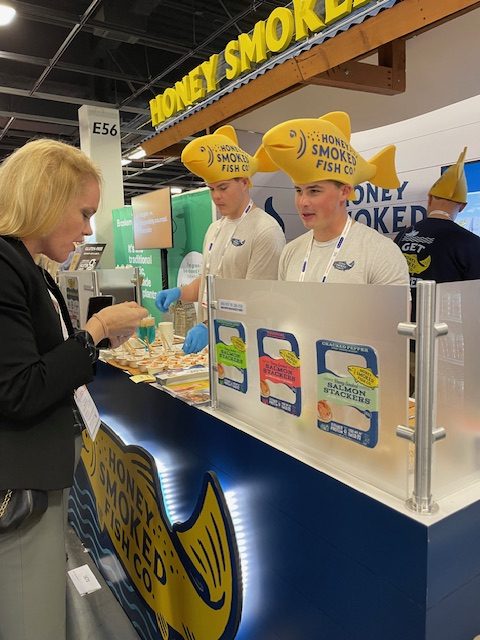
That’s not necessarily translating to premium products, but to shorter labels and simplified ingredients, with Miller saying “we continue to hear that GLP-1s will be the biggest thing to hit our industry for the next 20 years.”
Fizzy fever
The alternative soda category has exploded, with Olipop and Poppi leading the way with products that hit on multiple trend-right cylinders. They promise less sugar and fewer calories than old-school carbonated sodas, have gut-healthy prebiotics and probiotics, sport Insta-worthy packaging, and come in an increasing array of fanciful flavors.
For a segment that didn’t exist until recently, these functional sodas have quickly caught on with consumers to the tune of $1 billion in sales, per Circana. That number could easily increase to $1.5 billion in 2025, per estimates.
Retail behemoth Walmart has planted a flag in the space with its new “modern soda” in-store and online sections featuring Olipop, Poppi, Zevia, Culture Pop, and others.
To take advantage of the rush, new brands are popping up like mushrooms, though there may be a cap on how many can thrive.
“We’ll see how many of them make it to next year,” said Miller, an early investor in Olipop.
Modern moderation
There’s a truism about the majority of consumers who buy non-alcoholic (NA) spirits, wine and beer: they also drink booze, often switching from one to the other, even in a single night.
That practice, dubbed zebra striping, has helped fuel the massive growth in the NA segment, more obvious at Expo West in 2025 than ever before via brands like Best Day Brewing, Kul Mocks, and Hiyo, newly acquired by Constellation Brands.
Along with Gen Z—the demo often called “the most sober generation” in history—there’s a larger addressable audience for brands in the space.
Seven-year-old Töst helped carve out the category with its bubbly elixirs, which now come in single-serve sizes and slim cans to tap into the popularity of grab-and-go drinks. The brand describes itself as “a moderation play” that aims to speak to various demos.
“Boomers are much more health-conscious these days… this gives them the option to still be social but to cut back on booze,” Jess Daponte, the brand’s CMO, said from Expo West’s North Hall on Wednesday. “And Gen X is definitely more mind-and-body aware these days.”
For a bit of newstalgia, Töst has introduced a sangria in time for Cinco de Mayo, intending to appeal to those who want to celebrate without being hungover on May 6.
Mood boosters
Aimed at some of the same imbibers, along with the music festival and club crowd, Recess, a sparkling CBD drink, has expanded its line with new flavors, mix-in powders, and stylish slim-can mocktails like grapefruit Paloma and watermelon mojito.
With taglines liberally sprinkled with “calm, cool and collected” verbiage, the fast-growing brand contains ingredients like magnesium, adaptogens, and electrolytes, which are proving to be catnip to consumers.
CEO and founder Benjamin Witte sees no end to the category’s popularity, though he has positioned Recess as broader than an alcohol alternative, with expanded distribution at mainstream retailers including Target and Kroger.
“Our overarching strategy is mental wellness—giving people healthier ways to reduce stress, relax and moderate their alcohol intake,” said Witte, who has recently hired an in-house creative director to handle advertising. “We talk about fewer drinks—moderation not elimination—and we know that people switch off between our products and things like White Claw and High Noon.”
Meanwhile, marketing and advertising in this sector, like others, has become more empathetic, according to Nielsen’s Frey.
“Brands are leaning into the idea that ‘it’s ok to not be ok,’” Frey said. “They’re acknowledging the level of anxiety in the country right now, and their messages are all about supporting consumers.”
https://www.adweek.com/brand-marketing/6-sizzling-food-trends-marketers-need-to-know/
